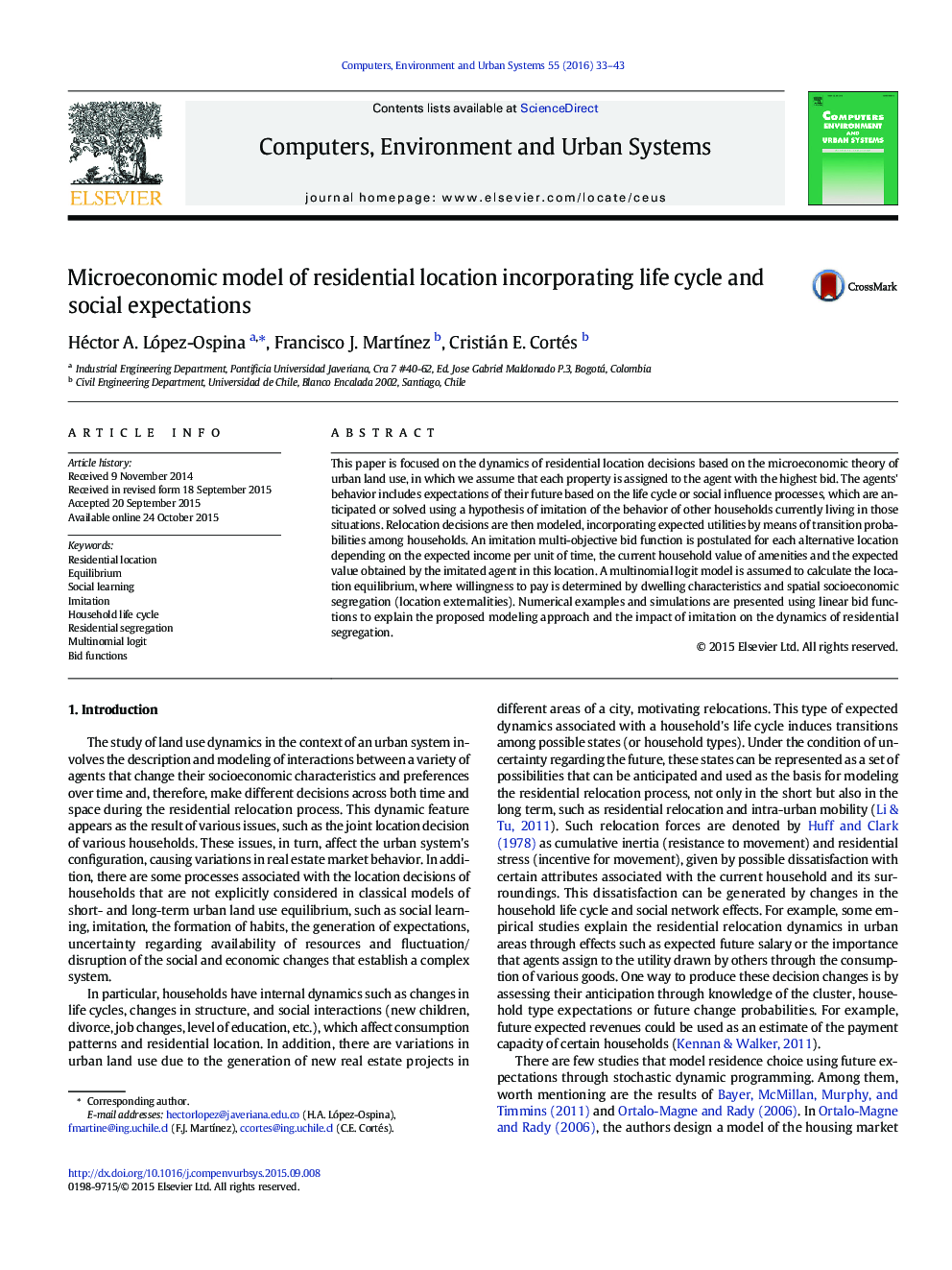| Article ID | Journal | Published Year | Pages | File Type |
|---|---|---|---|---|
| 506275 | Computers, Environment and Urban Systems | 2016 | 11 Pages |
•The proposed model captures the dynamics of residential location choices based on the microeconomic urban theory.•Household behavior includes life cycle expectations, which is anticipated by imitation to other households.•Imitation bid function depend on the expected income along with the current and expected household attributes.•A multinomial logit model is assumed to calculate the location equilibrium.•Numerical simulations with linear bid functions are proposed to explain the dynamics of residential segregation.
This paper is focused on the dynamics of residential location decisions based on the microeconomic theory of urban land use, in which we assume that each property is assigned to the agent with the highest bid. The agents' behavior includes expectations of their future based on the life cycle or social influence processes, which are anticipated or solved using a hypothesis of imitation of the behavior of other households currently living in those situations. Relocation decisions are then modeled, incorporating expected utilities by means of transition probabilities among households. An imitation multi-objective bid function is postulated for each alternative location depending on the expected income per unit of time, the current household value of amenities and the expected value obtained by the imitated agent in this location. A multinomial logit model is assumed to calculate the location equilibrium, where willingness to pay is determined by dwelling characteristics and spatial socioeconomic segregation (location externalities). Numerical examples and simulations are presented using linear bid functions to explain the proposed modeling approach and the impact of imitation on the dynamics of residential segregation.
